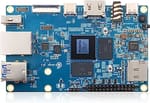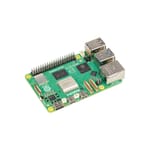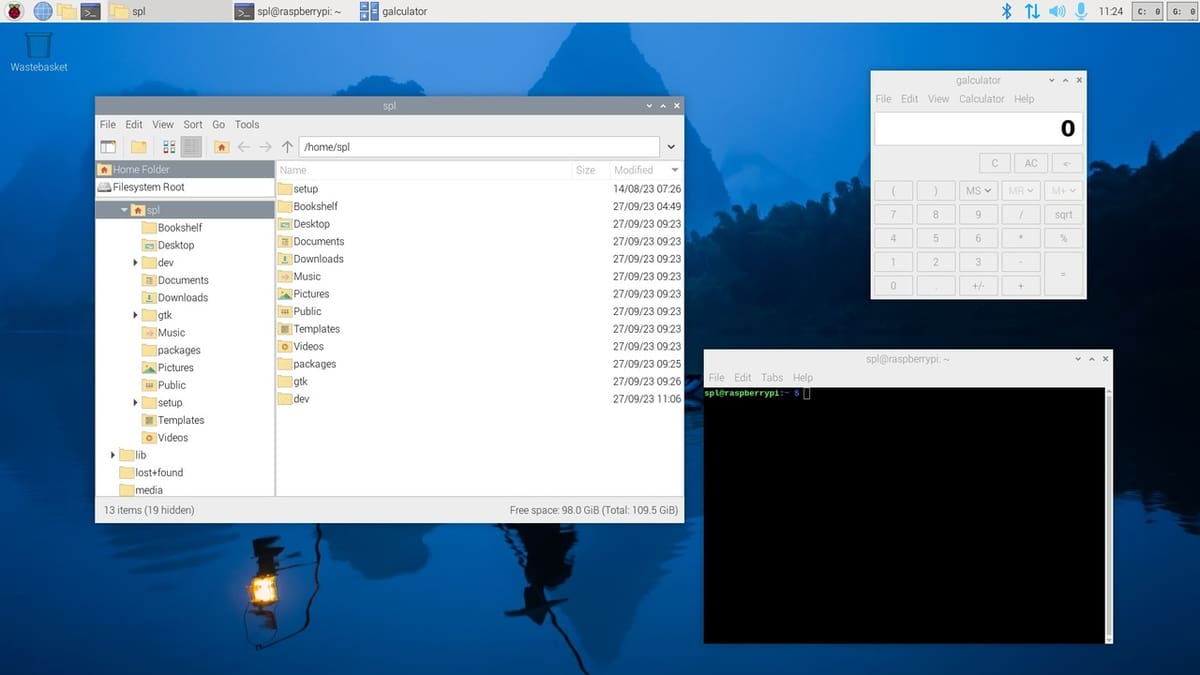Single-board computers (SBCs) are one of the darlings of the DIY electronics scene. They serve as an excellent alternative for running systems and performing tasks that previously required a desktop, and they’re becoming increasingly more powerful. In addition to a processor, RAM, and GPU, these mini-computers feature other crucial communication interfaces common to various hardware components, such as USB ports and even wireless communication.
At the height of the global semiconductor shortage, Raspberry Pi SBCs were challenging to find at reasonable prices. As a result, SBCs from other manufacturers began to gain in popularity; one of the standouts among these is Orange Pi. In this article, we’ll compare the Orange Pi 5 with the Raspberry Pi 5, highlighting their specific characteristics and use cases.
Let’s dive in!
The Contenders
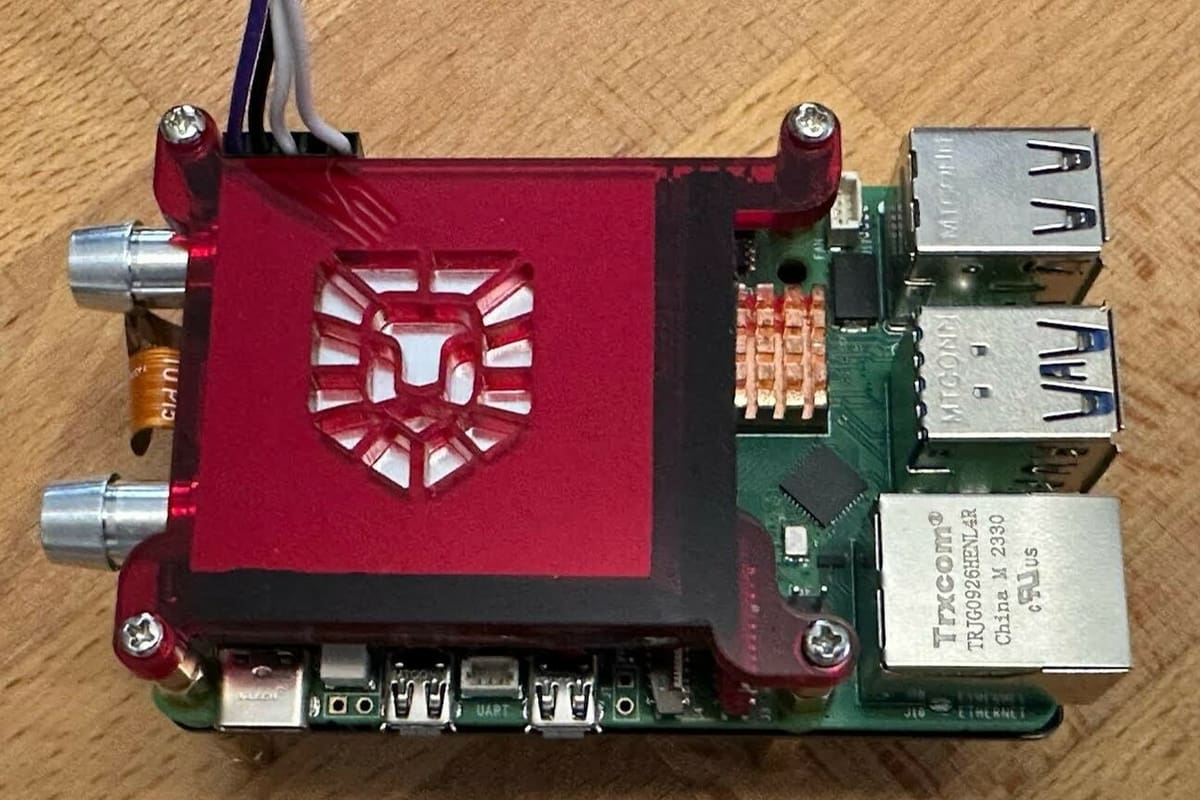
Orange Pi 5
Released before the Raspberry Pi 5, the Orange Pi 5 hit the market as a competitor to the Raspberry Pi 4, and it has proven to be a strong contender with the robust ARM Mali-G610 GPU and an impressive 6 TOPS of AI computing power. Unlike the Raspberry Pi, the Orange Pi doesn’t seem overly attached to size constraints. Being slightly larger than a credit card, some users won’t mind its size given everything included on the board. For example, the nifty M.2 slot can be used for both wireless communication and NVMe SSD storage.
When it comes to alternatives to the Raspberry Pi, the Orange Pi is often a top choice precisely due to its cost-effective relationship with powerful features. Despite all this power, some customers still hesitate to choose this board because it lacks as much support as its opponent’s mature community boasts.
Raspberry Pi 5
While its main competitors focus on performance and compatibility, the Raspberry Pi 5 seems to have centered on efficiency and innovation. For most features such as CPU, GPU, memory, and bandwidth, you can observe two to three times more performance with practically the same power consumption compared to its predecessor, the Raspberry Pi 4. It’s important to consider that Raspberry Pi has been in the market for much longer than its citrusy competitor, thus offering a more mature and stable software environment, along with its extensive active community of fans and users.
Given that scarcity and high prices in the market have left many users frustrated, Raspberry Pi promised to protect sales until the end of 2023, limiting them to one unit per individual. One of their initiatives to fulfill this promise was to distribute a single-use code for priority access to purchase the new Raspberry Pi 5 to subscribers of The MagPi and HackSpace magazines. With over 14 million units of the Raspberry Pi 4 sold, many must be eager for this new version.
Common Ground
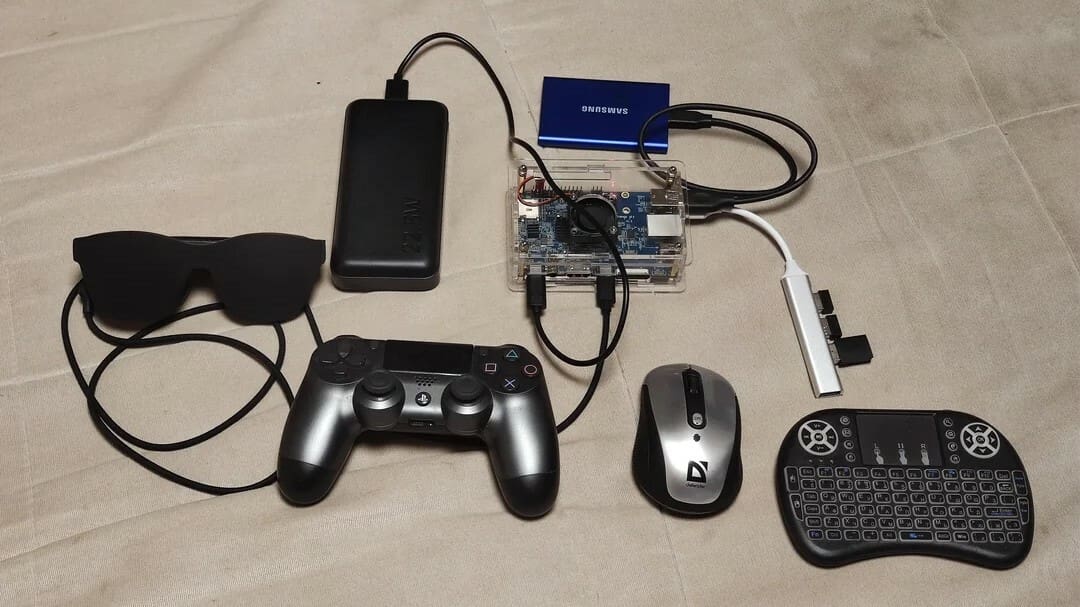
Beyond the similarities in their specs (which we’ll highlight in a later section), there are a few noteworthy areas where these boards overlap…
Native Operating Systems
What unites these boards in the realm of operating systems is their commitment to providing robust desktop solutions. As both the Orange Pi 5 and the Raspberry Pi 5 rely on the seamless integration of drivers and software components to unleash their full potential, the native Linux-based operating systems for each ensure performance and functionality. This, in turn, brings several advantages, including more efficient native applications and optimized installers.
Keep Cool
For both boards, active cooling kits are highly recommended, especially when used in applications and activities that demand a lot from either board or for prolonged use. This preserves the boards’ longevity and significantly aids in performance by maintaining the chips at acceptable temperatures, thus increasing the overall system stability.
Use Cases
Given the features of both boards, there’s a wide overlap in the way they’re used. From classic game emulation to serving as desktop alternatives, their use cases delve into areas like artificial intelligence, robotics, home automation, gadgets, network management, and media projects. They also transform into powerful hubs for creating custom NAS storage systems. The applications are as diverse as the user’s imagination.
Differences
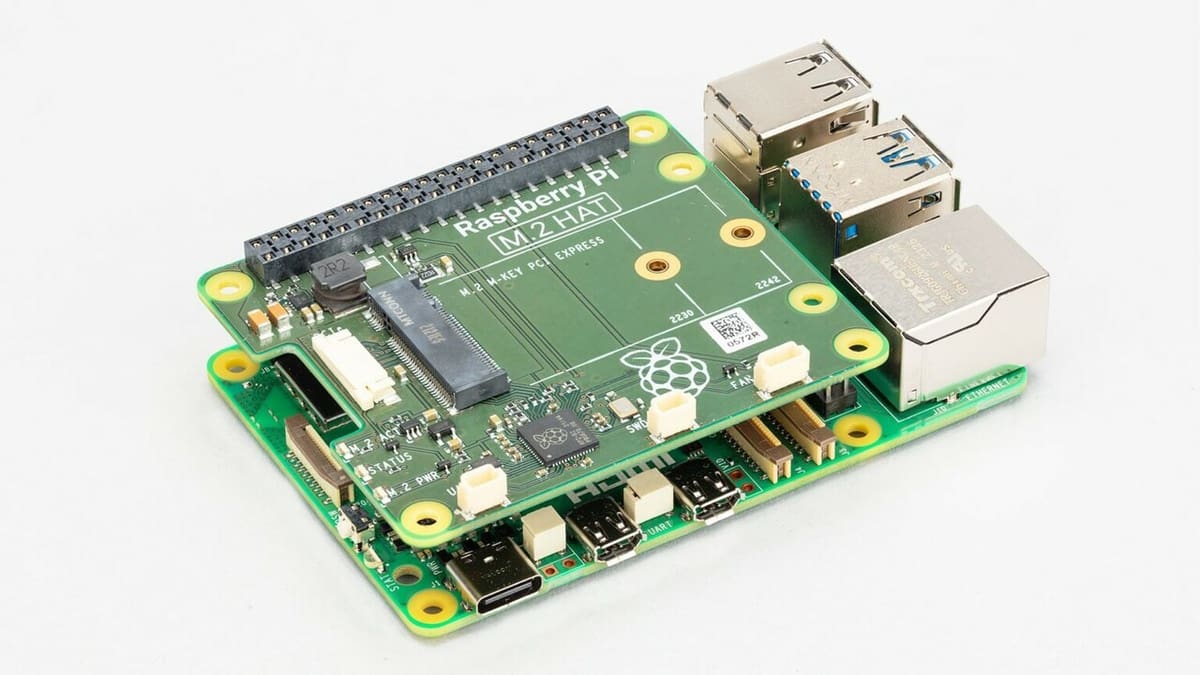
Now, let’s go to the main differences between these powerful opponents.
Form Factor
The first notable difference is the size of each SBC: The Orange Pi measures 62 mm x 100 mm compared to the Raspberry Pi’s 86 mm × 56 mm. Despite being larger, the Orange Pi 5 has a reduced GPIO header with 26 pins compared to the standard 40 pins found on the Raspberry Pi 5.
The Raspberry Pi 5 remains conservative in maintaining its credit card size, providing familiarity to users while also posing a design challenge for developers; there are only so many features that can fit Raspberry Pi’s footprint. For example, the audio and composite video port found on the Raspberry Pi 4 has been replaced with two MIPI camera/display transceivers. Where a MIPI DSI display port was previously found, there’s now a reduced one for a PCIe interface.
In the case of the Orange Pi 5, it’s clear that important new features trump size, and compared to previous versions, the Orange Pi 5’s components are organized in a very different way. This can make things more challenging for case production, as well as for designers who prefer using a standard as the basis for their projects.
Performance
Firstly, it’s important to note that these two opponents use very distinct core configurations and chip architectures. While the Orange Pi 5’s RK3588S chip uses an octa-core configuration (four Cortex-A76 cores at 2.4 GHz and four more power-efficient Cortex-A55 cores at 1.8 GHz), the Raspberry Pi 5’s BCM2712 uses a quad-core configuration with Cortex-A76 CPUs at 2.4 GHz. You might be wondering how they can compete with such different core quantities, but it’s important to note that the Raspberry Pi 5 comes with two other chips: the PR1 as the I/O controller and the DA9091 as power management, capable of providing up to 20 amps of current to power the main cores and peripherals.
As mentioned earlier, the Orange Pi 5 has a neural processing unit (NPU) that’s capable of providing up to 6 TOPS for the processing of machine learning algorithms. There’s no NPU on the Raspberry Pi 5, which seems to have frustrated some fans, as seen in forums like Serve the Home. This gives the Orange Pi 5 a leg up in artificial intelligence applications.
RAM
The available RAM options represent another key difference between the boards. While Raspberry Pi 5 is limited to 4 GB and 8 GB, the Orange Pi 5 also comes in 16-GB and 32-GB variations. The higher capacity makes perfect sense when running AI applications.
Connectivity
There’s quite a bit that’s different connectivity-wise between the two boards, much of which you can see in the specs comparison in the next section. Particularly striking is the difference in video capabilities. While the Raspberry Pi 5 supports 4K ultra HD video output, the Orange Pi 5 tops this with its support for 8K HDMI 2.1 video. This feature makes the Orange Pi 5 a more powerful choice for applications that demand high resolution and video quality.
Thanks to its M.2 M-key expansion slot, the Orange Pi 5 natively supports M.2 SSDs in sizes 2230 and 2242, a valuable addition crucial for projects requiring high-capacity and lightning-fast storage. An M.2 slot is only available to the Raspberry Pi 5 through separate expansions like a HAT or a base with NVMe support via PCIe 2.0. The compatible sizes change, however, depending on which type of expansion you go for: 2230 and 2242 for a HAT and sizes 2242 and 2280 for a base adapter.
When it comes to wireless connectivity, the Orange Pi 5 is at a disadvantage for not having integrated wireless connections like the Raspberry Pi 5. However, it has support for a Wi-Fi 6 and Bluetooth 5.0 module through the M.2 socket. The major drawback, though, is that there is only one M.2 slot. If you’re using the slot for high-speed storage, you’ll have to use a USB adapter for wireless connections.
Another significant difference is that the Raspberry Pi 5’s gigabit Ethernet supports PoE+ and has a specific connector for this purpose, but a HAT is required to achieve this functionality. This is absent from the Orange Pi 5.
Operating Systems
In practice, the most obvious use for these boards is as a mini-desktop. Therefore, both have a notable dedication to providing native operating systems that meet user expectations. On the Orange Pi 5’s side, we find the Orange Pi OS in two versions, Android and Arch, compatible with both the Orange Pi 5 and other Orange boards like the Orange Pi 800. There are also other official images of the OpenWRT, Ubuntu, and Debian systems that are compatible.
When it comes to the Raspberry Pi 5, the confirmed systems so far include a new version of the Raspberry Pi OS called Bookworm and Ubuntu 23.10. However, some users in the manufacturer’s forum mentioned that Arch Linux ARM and Manjaro also work well, and suggest checking the manufacturer’s Imager for available options. In terms of operating systems, both boards present solid solutions for use as a desktop. It’s crucial to consider the recommended versions because what they have in common is that their hardware components depend on drivers and other components for the entire software environment to reflect the expected performance and function correctly.
Gaming Emulation
Regarding the use of these boards for game emulation, the Orange Pi 5 stands out more due to its robust Mali G610 GPU, coupled with other fast storage resources, among others. In the gaming emulation field, some consoles can be unpredictable and unstable even with good features. However, both the Orange Pi 5 and Raspberry Pi 5 show impressive results, as seen in tests conducted by ETA Prime and Modern Vintage Gamer.
While the Orange Pi 5 achieves higher frame rates in PlayStation Portable games like God Of War, the Raspberry Pi 5 also proves to be a formidable competitor with better frame rates than the Orange Pi 5 in other Dreamcast games. In summary, this field is genuinely competitive for both, but it all depends on your preferred games and consoles because each game will have a different adaptation to the setup. This is due to a set of factors involving power supply to active cooling for each – something crucial to consider for optimal results.
The Specs
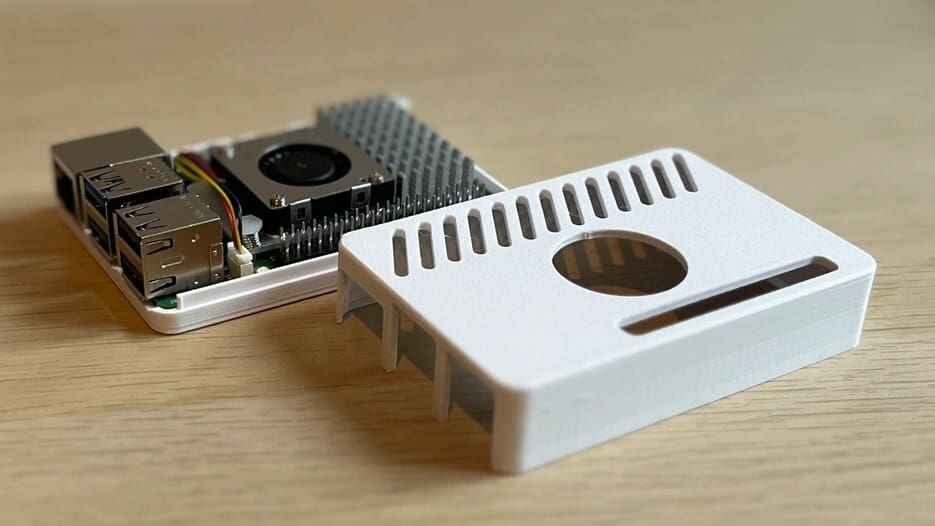
Here’s a recap of the most important features of both boards to get an overview of their capabilities.
Verdict
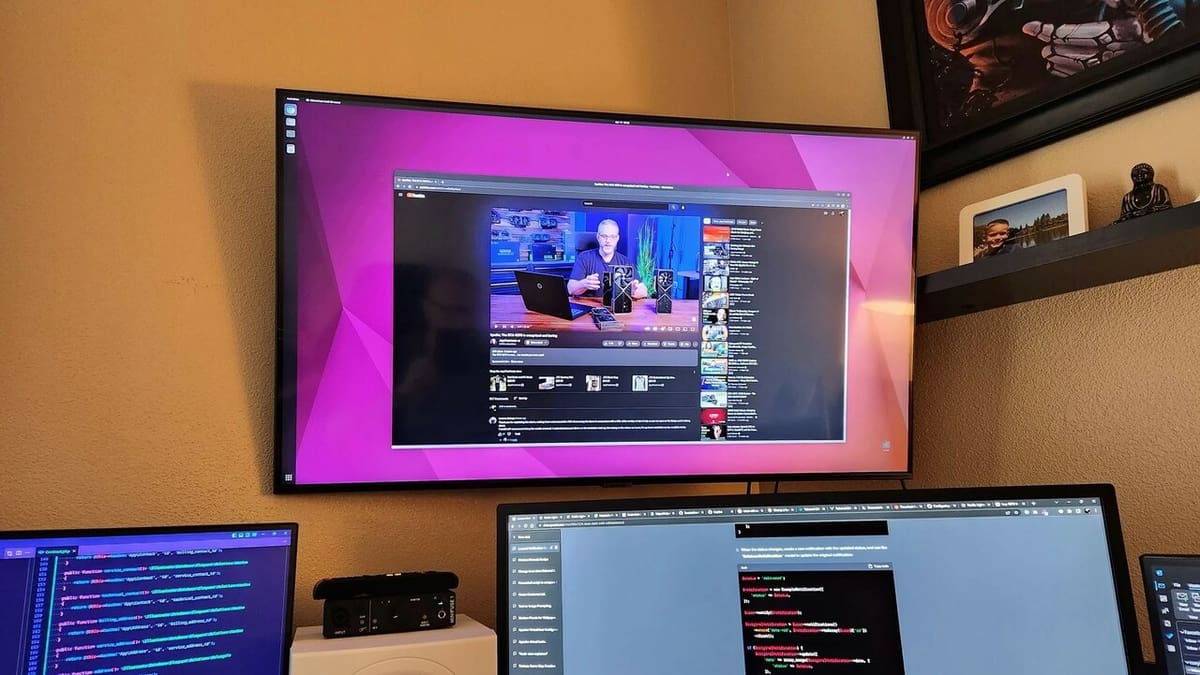
When deciding between the Orange Pi 5 and the Raspberry Pi 5, it’s crucial to consider a wide range of factors, as both boards offer distinct features to meet different needs. The Orange Pi 5 stands out by providing native SSD support, a variety of I/O options. and the possibility of AI use cases. Its larger physical dimension may be a disadvantage for some applications.
On the other hand, the Raspberry Pi 5 maintains its compact form, preserving the traditional format that’s familiar to many users. Additionally, the active community and solid performance, especially in terms of GPU speed, are notable considerations. The presence of a wide variety of accessories and the long-standing market presence contribute to the stability and maturity of the Raspberry Pi ecosystem.
As always, the decision between these boards should be guided by the user’s specific needs, with the key considerations being intended use, connectivity requirements, and available support.
License: The text of "Orange Pi 5 vs Raspberry Pi 5: The Differences" by All3DP is licensed under a Creative Commons Attribution 4.0 International License.
CERTAIN CONTENT THAT APPEARS ON THIS SITE COMES FROM AMAZON. THIS CONTENT IS PROVIDED ‘AS IS’ AND IS SUBJECT TO CHANGE OR REMOVAL AT ANY TIME.

